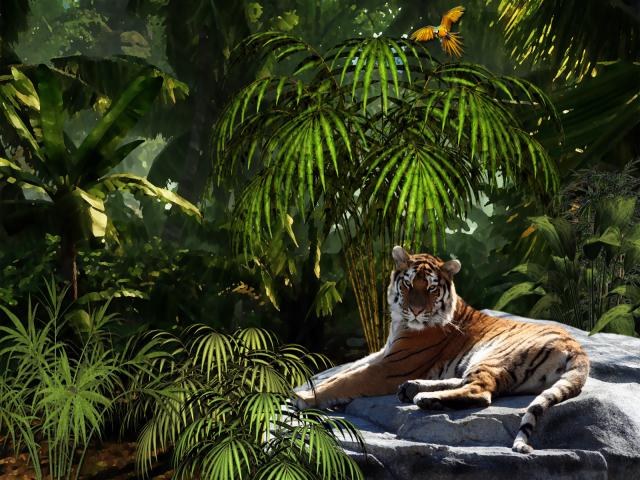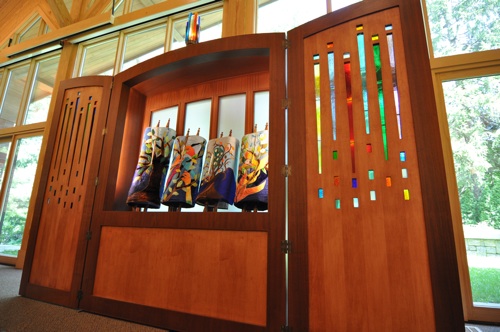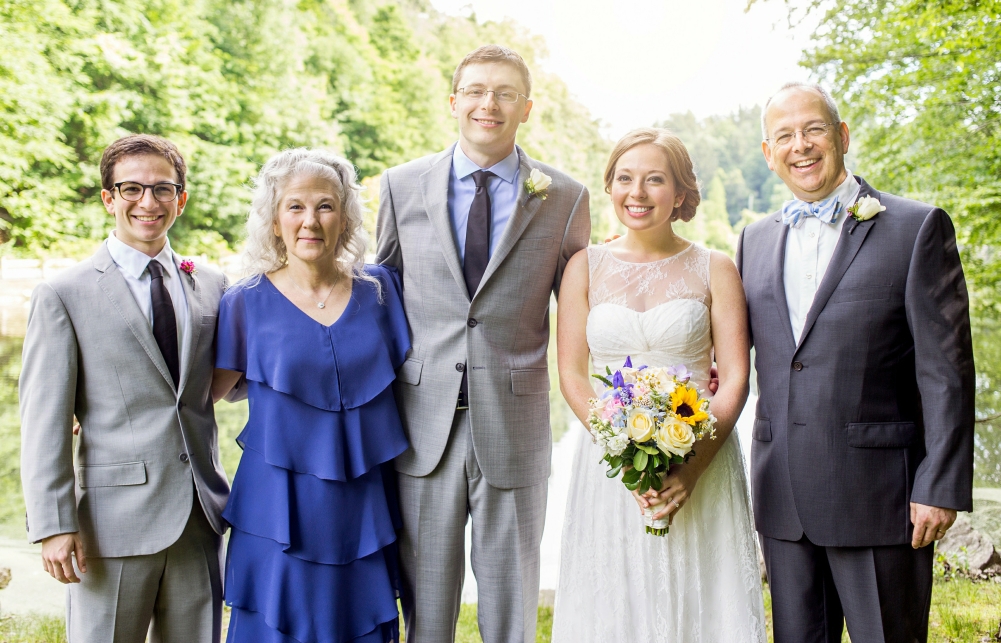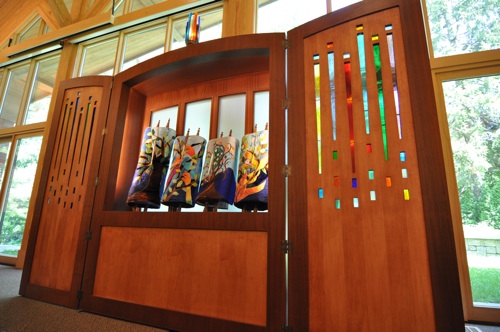The Synagogue: A House, a Home, a Watering Hole
 Well, summer’s over. I hope yours was a great one and that you did some really exciting things. I, you may have heard, had an unforgettably wonderful summer. Do you know what I did? That’s right! I went on a jungle safari. Ellen and I were looking for something different to fill our idle days of vacation, and when the idea of sharing our time-off with poisonous snakes and treacherous panthers came to mind, we simply could not resist. So there we were, donning pith helmets and mosquito netting, preparing to embark upon our very first jungle safari. As we prepared to enter the tropical forest, I turned to our guide and I asked him, “Is it true that jungle animals won’t harm you if you carry a torch?” “That depends,” replied our guide, “on how fast you carry it.”
Well, summer’s over. I hope yours was a great one and that you did some really exciting things. I, you may have heard, had an unforgettably wonderful summer. Do you know what I did? That’s right! I went on a jungle safari. Ellen and I were looking for something different to fill our idle days of vacation, and when the idea of sharing our time-off with poisonous snakes and treacherous panthers came to mind, we simply could not resist. So there we were, donning pith helmets and mosquito netting, preparing to embark upon our very first jungle safari. As we prepared to enter the tropical forest, I turned to our guide and I asked him, “Is it true that jungle animals won’t harm you if you carry a torch?” “That depends,” replied our guide, “on how fast you carry it.”
Okay, so I didn’t really go on a safari this summer. But I did see my daughter Katie get married. And that was all the adventure I needed! The love that filled our hearts on that day – from family, from friends, from this community – reminded me just how beautiful an adventure life can be. To watch a child not only step into adulthood but do so with unbridled joy and unbounded confidence, I can’t imagine there could be any more satisfying moment for a parent.
But talk to me again when I’ve got grandchildren.
Still, while I haven’t really been thinking about safaris, I have been thinking about animals. Yes yes yes, it all began with Charlie. When that little dog entered my life four years ago, I began a journey of dumbfoundedness and awe at just how “human” a dog can be and, of course, how much this human can love a dog.
But it turns out that lots of animals display what we call “human qualities.” Animals may be far more emotional, thoughtful and socially bonded than we previously gave them credit for. Listen to this list, and note how many of these species exhibit qualities you and I might previously have reserved for ourselves.
Chimpanzees, for example, play peek-a-boo with each other. Crows can hold a grudge. Sandhill cranes mate for life. Albatrosses sometimes choose life-partners of the same gender. Meerkats practice killing scorpions with their young to teach them how to acquire food. Wolves grieve for their dead by seeking solitude. And bonobos (a smaller member of the chimp family) are inclined to share with strangers rather than fight for property.
It would seem that human beings don’t hold a monopoly on human behavior. And, of course, any dog owner will tell you that our dogs are sometimes better people than some people we know.
Which all leads to my point this evening, that most of us (probably all of us) need practice and help with our own human qualities. Like the meerkat, we too benefit from someone showing us the way.
Enter religion and the worship community.
The world is an enormous place. And in the digital age, one can access information from almost anywhere. Our own dystopian present already includes people who rarely move from in front of their computer and/or television screens, living their lives through the pixels of transmitted data and pictures. For many, the synagogue seems like an antiquated, irrelevant archaeological ruin.
But like the animal kingdom, human beings need one another. We need friendship, encouragement, support, laughter, guidance, and a thousand other bits and pieces of living that come from spending time with others. In synagogues, we find people who might be able to offer that.
Synagogues have three traditional names. Bet T’filah, house of prayer. Bet Midrash, house of learning. And Bet K’neset … house of communal gathering. While it is certainly possible to find elsewhere everything that a temple offers, houses of worship put so much of it in one place that it’s like a Wal-Mart for human bonding.
With prayer, learning and communal gathering, we who come together in our synagogue share with one another these really vital aspects of human existence. Prayer is the sharing of hope. Learning is the vigorous debate of what constitutes moral living. And communal gathering provides opportunities to join hands in helping others, and to join hands just for the fun of being together.
Life isn’t that different from a jungle safari. It’s really pretty out there. But it can get rough really fast. And a good guide who can tell you whether or not a torch is going to help … isn’t a bad idea.
Here at Woodlands, we try to bring the very best of prayer, of learning, and of communal gathering to our members. From oldest to youngest, we not only share in building this “safari” of ours, but we encourage one another to have a voice and to roll up our sleeves and to work together in building a better synagogue experience for us all.
Why? So that as many days as is humanly possible are filled with the kind of awe and friendship and love that an old rabbi’s daughter’s wedding day was.
John Foster Hall, early-20th century British music-hall and radio comedian, while in the guise of his clerical persona, The Reverend Vivian Foster, the Vicar of Mirth, once quipped, “We are all here on earth to help others; what on earth the others are here for I don’t know.”
While we don’t actually know much of anything about why we are here, we seem to derive great benefit from wondering about that question, and coming up with workable responses that help us to live our lives.
It is the 11th of Elul. There are 19 days until Rosh Hashanah, when our annual review of how we answer the question, “Why am I here?” resumes. This year, may we come up with some great possibilities. And may we find comfort, joy and inspiration in doing so with our fellow congregants by our side.
Shabbat shalom,
Billy




Gloria Falk
Great not to have missed your sermon while in St. Louis. Gloria
Sent from my iPad
>